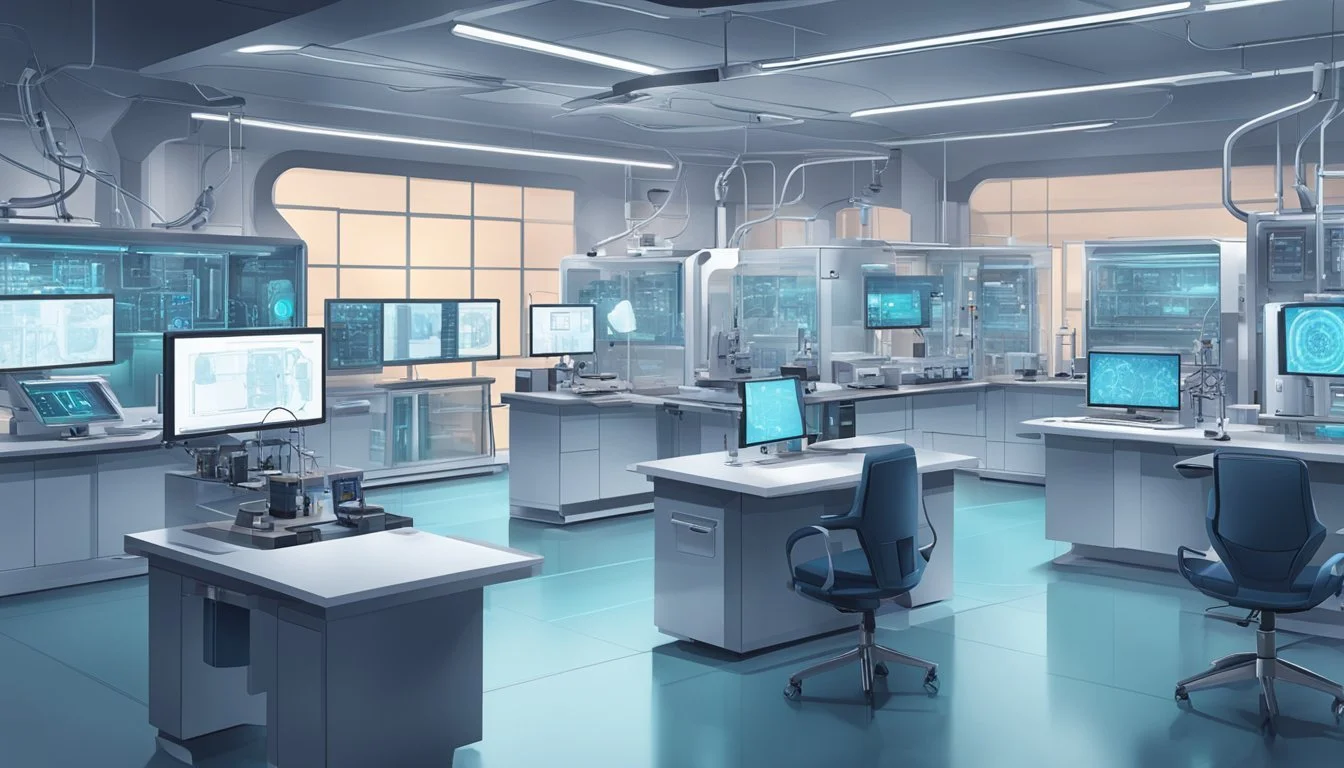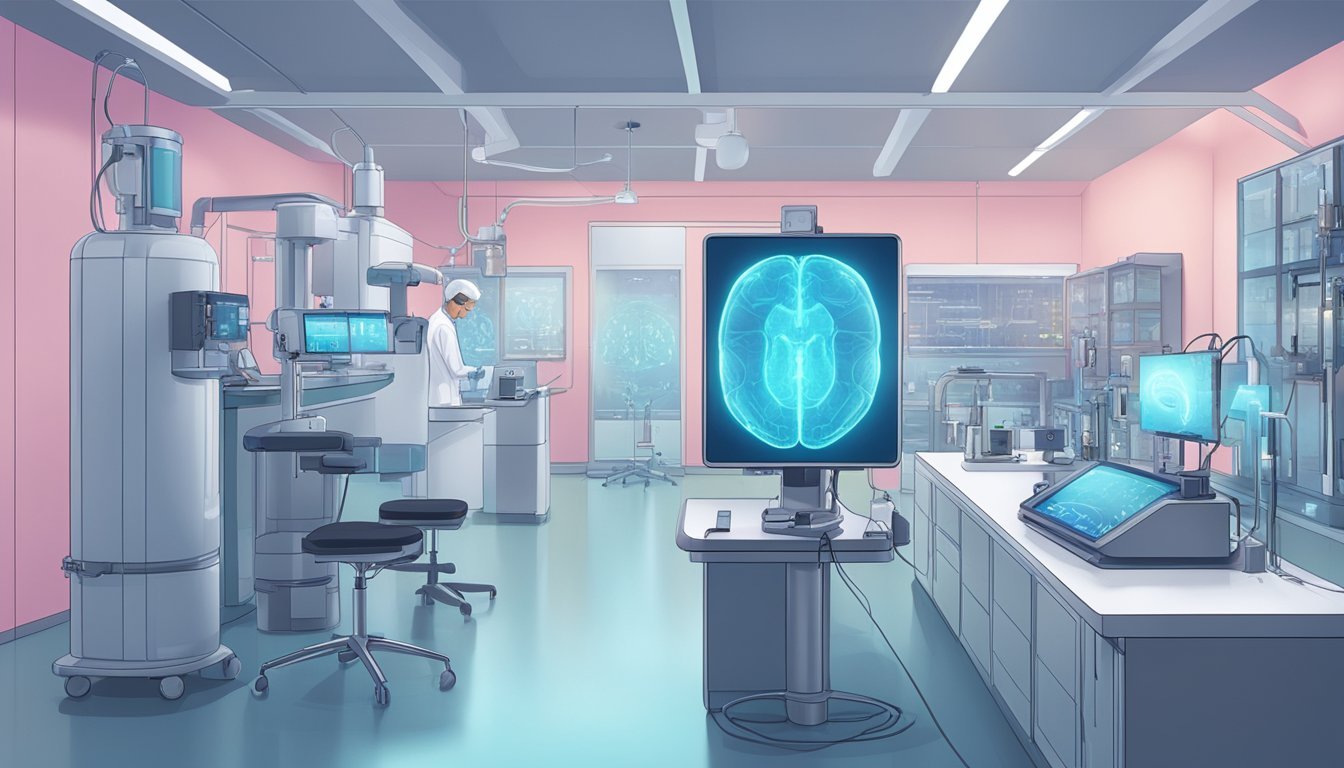Can Neuralink Cure Dementia? The Shocking Potential of Brain-Computer Tech!
Neuralink, Elon Musk's brain-computer interface company, has sparked intense interest in its potential to revolutionize neurological treatments. The company's innovative device, implanted in the skull, aims to read and interpret brain activity using microscopic wires and artificial intelligence.
While Neuralink shows promise for treating early-stage neurological conditions, its ability to cure dementia remains uncertain. The technology may offer limited help for late-stage Alzheimer's, as significant brain damage has already occurred. However, Neuralink's potential to stimulate the brain and tackle treatment-resistant depression suggests it could play a role in addressing cognitive decline.
Neuralink's aspirations extend beyond restoring motor function to patients with paralysis. The company envisions its brain-computer interface as a tool for treating various neurological disorders, including Alzheimer's and Parkinson's disease. As research progresses, the full extent of Neuralink's capabilities in combating dementia will become clearer.
Understanding Dementia
Dementia is a complex neurological condition affecting cognitive function. It encompasses various disorders that impair memory, thinking, and behavior.
The Science Behind Dementia
Dementia results from damage to brain cells, disrupting their ability to communicate. This interference leads to cognitive decline and impacts daily functioning. In Alzheimer's disease, the most common form of dementia, abnormal protein deposits form plaques and tangles in the brain. These structures disrupt neuron activity and cause cell death.
Brain imaging techniques reveal shrinkage in affected areas. Neuron loss particularly affects regions responsible for memory, language, and reasoning. As the condition progresses, brain activity decreases in multiple areas.
Different Types of Dementia
Alzheimer's disease accounts for 60-80% of dementia cases. It typically begins with memory loss and progresses to impair other cognitive functions.
Vascular dementia, the second most common type, results from reduced blood flow to the brain. It often occurs after a stroke or series of small strokes.
Lewy body dementia involves abnormal protein deposits in the brain. It causes visual hallucinations and movement problems similar to Parkinson's disease.
Frontotemporal dementia primarily affects personality, behavior, and language. It tends to occur at a younger age than other forms.
Overview of Neuralink
Neuralink is a neurotechnology company developing brain-computer interface (BCI) devices. The company aims to create implantable brain chips to treat neurological conditions and enhance human cognitive abilities.
History and Development
Neuralink was founded in 2016 by Elon Musk and Max Hodak. The company has raised $373 million in funding across five rounds. Musk's vision for Neuralink extends beyond medical applications, envisioning a future where humans can merge with artificial intelligence.
Neuralink has made significant strides in BCI technology since its inception. In 2019, the company unveiled its first prototype device. By 2020, Neuralink demonstrated its technology in pigs, showcasing real-time neural signals.
How Neuralink Works
Neuralink's device is a coin-sized chip implanted in the skull. It contains microscopic wires that can read and stimulate neuron activity. The chip wirelessly transmits signals to an external receiving unit.
The BCI technology interprets brain signals and translates them into digital commands. This allows for direct communication between the brain and external devices. Potential applications include controlling prosthetics, treating neurological disorders, and interfacing with computers.
Neuralink's approach focuses on minimally invasive surgery for chip implantation. The company is developing specialized robots to perform the precise insertion of electrode threads into the brain.
Potential of BCI in Treating Neurological Conditions
Brain-computer interfaces (BCIs) show promise for treating various neurological conditions by enabling direct communication between the brain and external devices. This technology could potentially improve outcomes for patients with dementia, strokes, spinal cord injuries, and other neurological disorders.
Current Research on BCIs and Dementia
Scientists are exploring BCIs as a potential tool for early detection and management of dementia. These interfaces can monitor brain activity patterns associated with cognitive decline. Some studies suggest BCIs may help stimulate neural pathways to slow cognitive deterioration.
Researchers are developing BCIs that could assist dementia patients with daily tasks and communication. These devices aim to interpret brain signals and translate them into actions or speech. While still experimental, this technology offers hope for maintaining independence and quality of life.
BCIs are also being investigated for their potential to enhance memory function in dementia patients. By stimulating specific brain regions, researchers hope to improve memory recall and formation.
Advancements in BCI Technology
Recent technological breakthroughs have expanded the capabilities of BCIs. High-resolution electrode arrays now allow for more precise recording and stimulation of brain activity. This improved accuracy enhances the potential for treating neurological conditions.
Companies like Neuralink are developing minimally invasive brain implants with thousands of electrodes. These devices aim to offer better signal quality and longevity compared to traditional BCIs. Such advancements could lead to more effective treatments for conditions like spinal cord injuries and stroke-related paralysis.
Machine learning algorithms have significantly improved the interpretation of brain signals. This progress enables more intuitive control of external devices and could enhance communication for patients with severe neurological impairments.
Neuralink and Dementia
Neuralink's potential impact on dementia treatment has generated significant interest and speculation. The brain-computer interface technology aims to address neurological conditions, including various forms of dementia.
Can Neuralink Cure Dementia?
Neuralink's potential to cure dementia remains uncertain. Elon Musk has expressed optimism about the technology's ability to revolutionize dementia treatment, particularly in early stages. For Alzheimer's disease, the most common form of dementia, Neuralink may offer limited help in its early phases.
The technology could potentially stimulate specific brain regions affected by dementia, possibly slowing cognitive decline. However, its effectiveness in late-stage Alzheimer's appears limited due to extensive brain damage.
Challenges and Limitations
Neuralink faces several hurdles in addressing dementia. The invasive nature of the implantation procedure poses risks, especially for elderly patients who are more susceptible to surgical complications.
Ethical considerations surround the use of brain-computer interfaces in vulnerable populations. The complexity of dementia, with its various forms and underlying causes, presents a significant challenge for developing a one-size-fits-all solution.
Long-term effects of brain implants remain unknown, raising concerns about potential side effects. Extensive clinical trials will be necessary to establish Neuralink's safety and efficacy in treating dementia before widespread adoption can be considered.
Ethics and Safety in Neuralink's Development
Neuralink's brain-computer interface technology raises important ethical and safety considerations. The company faces scrutiny over its animal testing practices and regulatory compliance as it advances toward human trials.
The Debate on Animal Welfare
Neuralink's animal testing has sparked controversy. The company uses animal subjects, including monkeys and pigs, to develop and refine its brain implant technology. Critics argue this testing causes unnecessary suffering. Proponents say it's essential for advancing medical science.
Reports of animal deaths during experiments have intensified the debate. In 2022, the Physicians Committee for Responsible Medicine filed a complaint alleging animal-welfare violations at Neuralink's facilities. The company denied wrongdoing and stated it follows all regulations.
Neuralink has made efforts to improve animal care protocols. It invested in larger, more enriched habitats for test subjects. The company also implemented more rigorous oversight of surgical procedures.
Regulatory Approval Process
Neuralink must navigate a complex regulatory landscape to bring its technology to market. The FDA oversees the approval process for medical devices in the United States. In 2023, the agency granted Neuralink permission to begin human trials.
The regulatory review focuses on safety and efficacy. Neuralink must demonstrate its device doesn't pose undue risks to patients. This includes evaluating potential side effects like infection, device malfunction, or brain tissue damage.
Data from animal studies play a crucial role in the approval process. Regulators examine these results to assess potential human impacts. Neuralink's ability to address safety concerns in animals directly impacts its path to human use.
The company must also prove its technology offers meaningful benefits to patients. Initial trials aim to help people with paralysis regain motor function. Long-term goals include treating neurological conditions like dementia.
The Role of AI in Neuralink's Future
Artificial intelligence plays a crucial role in Neuralink's technology, enabling advanced interpretation of neural signals and potential enhancement of human cognition. The integration of AI with brain-computer interfaces opens up new frontiers in neuroscience and medical treatments.
Innovations in AI for Neuroscience
Neuralink's brain chip relies on sophisticated AI algorithms to decode neural activity in real-time. These algorithms process vast amounts of data from the microscopic threads implanted in the brain, translating electrical signals into actionable commands or information.
AI models are continuously refined to improve accuracy and responsiveness. Machine learning techniques allow the system to adapt to each user's unique brain patterns over time, potentially enhancing the device's effectiveness for treating neurological conditions like dementia.
The future of Neuralink may involve AI-powered predictive capabilities. By analyzing patterns in neural activity, the system could potentially anticipate and mitigate symptoms of neurological disorders before they manifest.
Researchers are exploring AI's potential to facilitate bi-directional communication between the brain and external devices. This could lead to more intuitive control of prosthetics or even direct brain-to-brain communication.
Beyond Dementia: Broader Impacts of Neuralink
Neuralink's potential extends far beyond dementia treatment. The brain-computer interface technology could revolutionize life for people with disabilities and even aid space exploration efforts.
Improving Life for the Blind and Paralyzed
Neuralink's brain-computer interface shows promise for restoring functionality to those with severe disabilities. For the blind, the technology could potentially bypass damaged optic nerves and directly stimulate the visual cortex, creating artificial vision.
People with spinal cord injuries may regain control of paralyzed limbs through Neuralink implants. The device could interpret brain signals and transmit them to assistive devices or directly to muscles, restoring movement and independence.
Early trials have demonstrated the ability to control computer cursors and type using only brain signals. As the technology advances, more complex motor functions may become possible for those with paralysis.
Neuralink's Role in Space Exploration
Neuralink technology could play a crucial role in future space missions. The brain-computer interface may allow astronauts to control spacecraft systems directly with their thoughts, increasing efficiency and reducing response times in critical situations.
The implants could also help monitor astronauts' cognitive function and stress levels during long-duration space flights. This data could be used to optimize crew performance and mental health in the challenging environment of deep space.
SpaceX, another of Elon Musk's companies, could potentially integrate Neuralink technology into its spacecraft designs. This synergy between neurotechnology and space engineering may accelerate humanity's journey to Mars and beyond.






